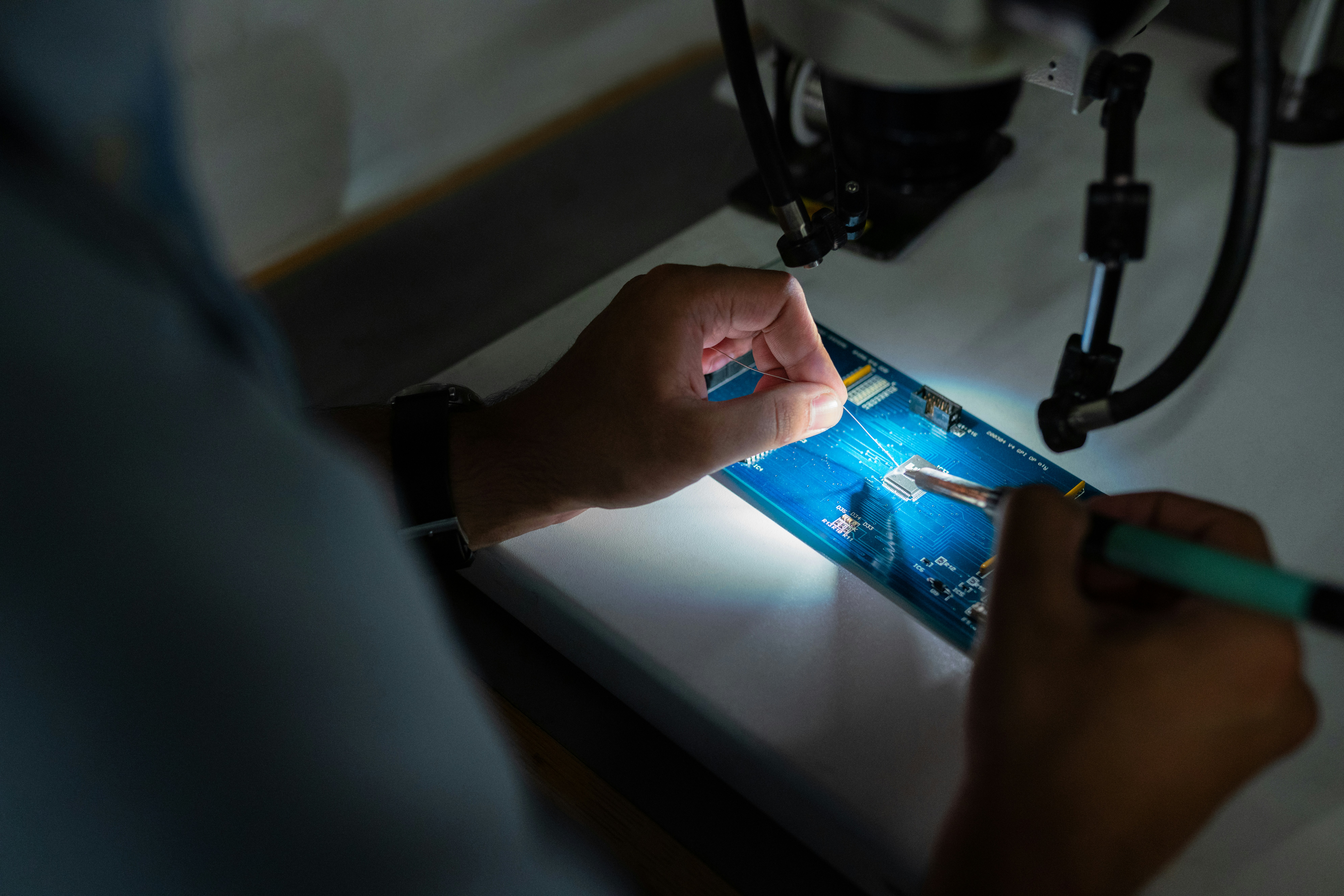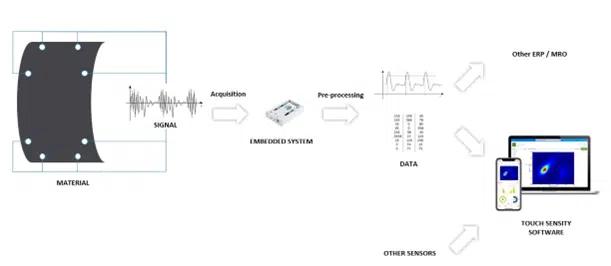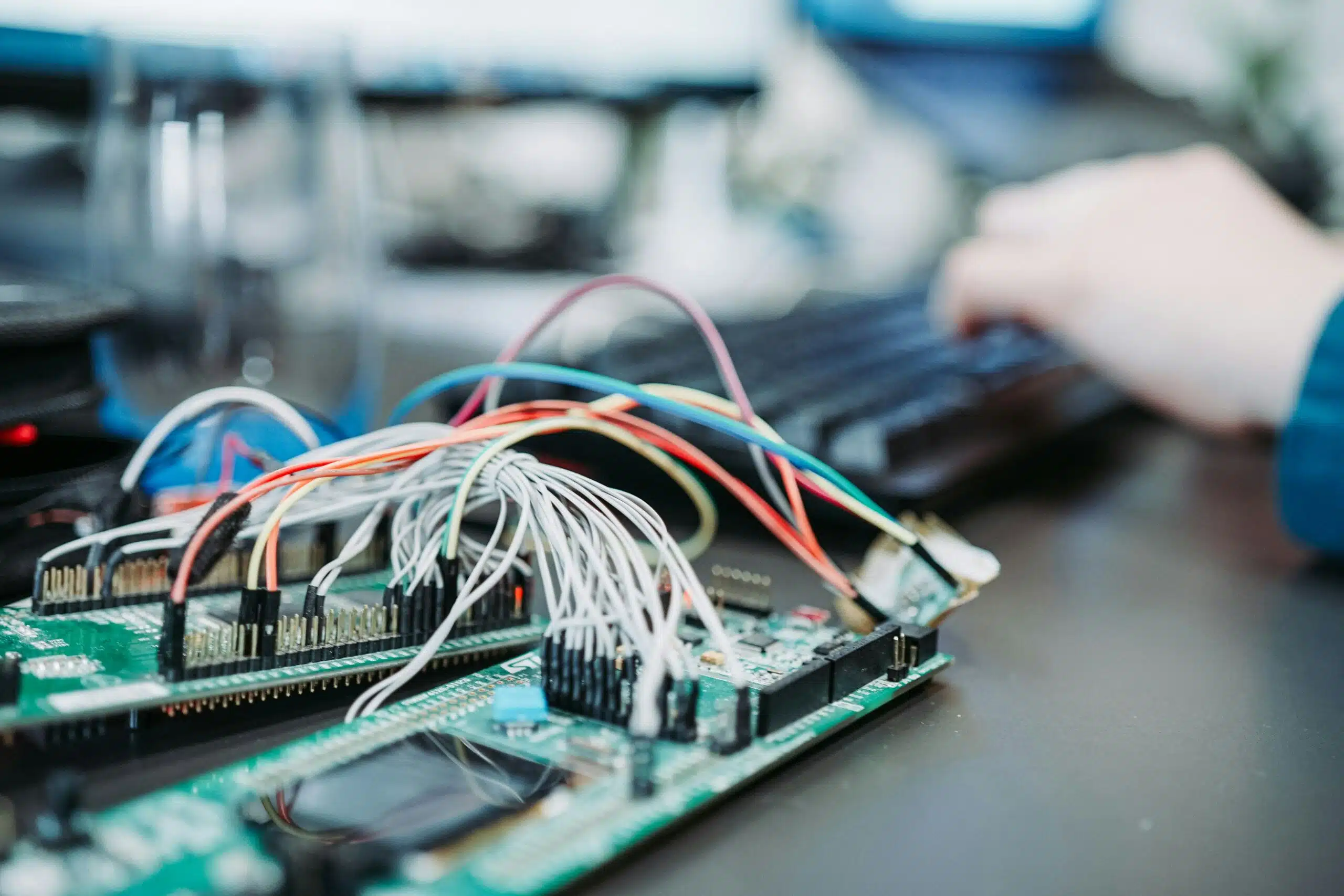Touch Sensity: “making materials talk“
Predictive maintenance aims to reduce costs to increase the competitiveness of companies by avoiding unplanned production downtime while increasing the useful life of industrial machinery (e.g. reducing plant downtime by 5-15%).
The technology combines sensor data with analytical techniques to enable optimised maintenance planning by predicting failures in industrial production processes.
The main challenges of predictive maintenance today are related to the presence of data from noisy or degraded sensors in an operational industrial environment; the need to collect, transmit and process large volumes of data in a timely manner; and the “ad hoc” approach, i.e. specific to a component or machine rather than global.
A reliable and versatile solution should also include effective monitoring systems and appropriate analysis techniques, as well as an architecture capable of processing large amounts of data in real time.
However, the ambitions of a project like Touch Sensity are justified by the fact that the global cost of maintenance in the transport sector is around $310 billion a year, and Touch Sensity’s predictive maintenance solution can deliver significant economic savings of around 25 per cent of that cost.
The global predictive maintenance market is estimated to be around $8 billion in 2022 and will grow to $16 billion by 2026, at a CAGR of 20%.
Its application in the transportation sector is worth about $2-2.5 billion per year by 2026 (SAM, which is 10-15% of TAM). The SOM for Touch Sensity is estimated at $116 million over 5 years, or 5% of SAM.
The business case for using Touch Sensity technology predicts that, with an average annual maintenance cost per aircraft of $5 million, this will be reduced by approximately $1.2 million (or 25%).
The pros and cons
The main drivers of the predictive maintenance market appear to be strong demand, growing adoption of big data, AI and ML, high scalability for multiple use cases and the need to optimise time, capital and data collection.
Conversely, the associated limitations appear to be due to the slow pace of industrial market adoption of disruptive technologies, certification issues and technology qualification.
The origins of Touch Sensity
Touch Sensity is a French company founded 3 years ago in Bordeaux as a continuation of the work of one of the co-founders who worked at the Institut Inria on connected textiles for the prevention of musculoskeletal disorders. This technology evolved into the broad field of sensitive materials, eventually addressing Structural Health Monitoring (SHM) for the mobility industry.
Its hardware and software infrastructure makes it possible to detect, locate and measure any damage, deformation and impact suffered by an integral component (on any type of vehicle), remotely, in real time and without changing materials.
In particular, Touch Sensity is based on the development of an innovative, non-invasive technology that allows the acquisition of all pressure, bending and tensile data exerted on a material, as well as damage (e.g. impacts or cracks), without the use of sensors.
This is made possible by the combination of a hardware system docked to the periphery of the material (via connectors or with a sheath) and mathematical models and artificial intelligence that allow all electrical field interactions to be localised and modelled in real time, to create a 3D map and to obtain various physical measurements to compare with the status quo of the material itself. Specific alerts are sent based on defined thresholds.
This technology can be adapted to different types of materials (solid or soft), whatever their environment and for many different applications: detection systems for non-destructive testing, predictive maintenance, intelligent composites, innovative human-machine interfaces.
These are the main competing technologies for structural health monitoring of materials:
- Non-destructive: not real-time (requires removal of component), slow (1 hour/1 m²) and limited for use on large areas;
- Immersive instruments: not very accurate (measurement of local points), require an undisturbed environment, integration into the material (weight increase, impact on mechanical strength).
The added value of Touch Sensity’s innovative solution:
- No sensors are used and there is a global view of the internal state of the material (not point by point), unlike point sensors;
- Detection over large areas (from a few decimetres to more than 1 square metre) with spatial resolution (from one mm);
- Real-time measurement that can be integrated throughout the life of the material for longitudinal measurement. All controllable remotely or locally, with a common architecture;
- Versatile, not limited to one type of data;
- Adaptable to different types of materials (solid, soft) regardless of their size and topology (complex and uneven topologies);
- Non-invasive integration, allowing materials to be monitored without altering their physical properties;
- Complete acquisition, analysis and processing system.
Business model
Current revenues are derived from PoC and project-type contracts with major players in the transport industry. To date, Touch Sensity has more than 19 active customers, with nearly 20 PoCs completed, 1 project completed, 5 in progress and 10 under negotiation.
In the current year, the company is committed to deploying the solution for non-critical and rapidly deployable functions, including obtaining information from currently unmonitored parts (e.g. hydrogen tanks).
Next year, the solution will be extended to critical functions (e.g. fuselage structure, engine) and will manage the diversification of materials used (metal, plastic). In 4-5 years, the aim is to replace the entire maintenance process by signing long-term contracts.
LIFTT believes that this innovative solution meets the current challenges of structural health monitoring for damage detection of industrial components by meeting the need for accurate real-time monitoring, reducing downtime, using a holistic approach that collects and analyses data and does not affect the manufacturing process of the part being monitored.
Leading industrial and mobility companies are already looking to integrate Touch Sensity’s technology into their processes and are responding positively to Touch Sensity’s business case.





